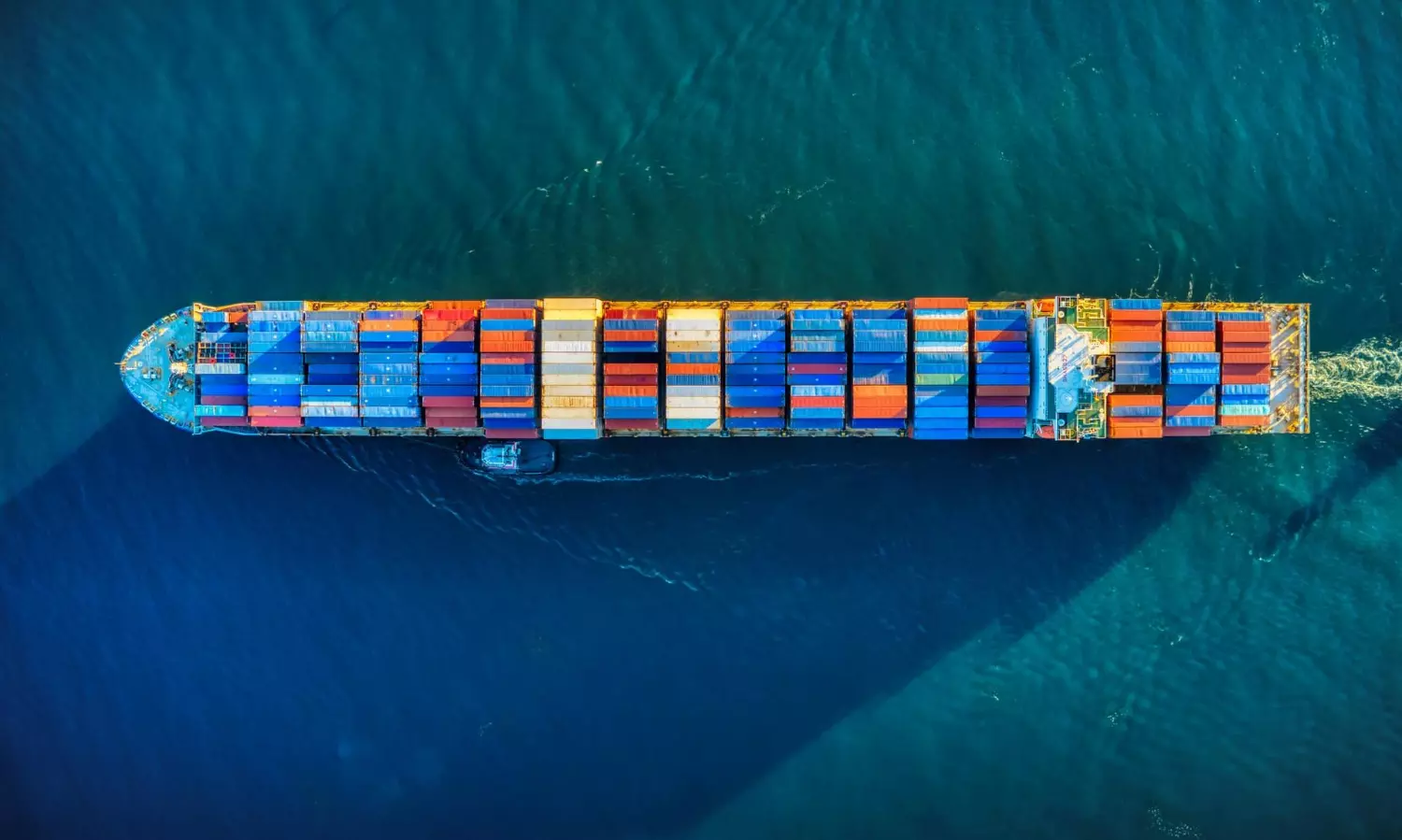U.S. Senate debates Shipping Act; WSC says address supply chain woes
Carriers have deployed every vessel available, but landside logjams are keeping vessels stuck outside U.S. ports: WSC

Photo by Venti Views on Unsplash
U.S. consumers are not yet ready to stop spending on goods (inflation, war and rising gas prices - what's that?) with the National Retail Federation expecting a 6-8 percent growth in 2022 and the Port of Los Angeles recording its best-ever container handling in February.
Seen in this background, the move by the U.S. Congress to regulate shipping is attracting flak from carriers. "Americans continue to import goods at record levels — so much so that the U.S. ports and landside logistics workforce is unable to process all the cargo," says the World Shipping Council in its reply to the U.S. Senate discussion of the Ocean Shipping Reform Act of 2022.
"Ocean carriers have deployed every vessel and every container available, and are moving more goods than at any point in history but the U.S. landside logjams are keeping vessels stuck outside U.S. ports," WSC says in its reply. "This import congestion is also consuming the capacity and space needed to ensure the uninterrupted flow of U.S. exports.
"The American people are looking for solutions to supply chain congestion resulting from the impacts of Covid-19. Unfortunately, the Ocean Shipping Reform Act of 2022, S.3580, which was marked up today by the Senate Commerce Committee, addresses none of the root causes of the U.S. landside congestion."
WSC feels that while the Senate is taking a more deliberative approach that the House's flawed process in passing the Ocean Reform Act of 2021, H.R.4996, "neither chamber's version of the bill does anything to fix the landside logistics breakdowns that are at the heart of America's supply chain problems. In fact, the House bill would make existing congestion worse. Comparatively, the Senate bill – despite carrying some of the same risks of unintended negative consequences – provides regulators enough authority to get the final rules right.
"Instead of passing legislation that would do nothing to address the nation's supply chain congestion, Congress should seek real solutions that take a comprehensive, forward-looking view. That means continued investment in port infrastructure and promoting communication, innovation, and collaboration across sectors to further strengthen the intermodal transportation system that has supported the U.S. economy throughout the pandemic. The World Shipping Council will continue to partner with Congress and other stakeholders on these worthwhile efforts."
The Biden administration got into the supply chain act again with a new plan - Freight Logistics Optimization Works (FLOW), "an information sharing initiative to pilot key freight information exchange between parts of the supply chain.
"The commitment to moving the transportation logistics system to 21st century digitisation follows the commitment to move toward 24/7 operations many made last fall," reads a fact sheet issued by the White House.
No slowdown in consumption
The Port of Los Angeles processed 857,764 TEUs in February, a 7.3 percent increase compared to last year. It was the port's busiest February in 115-year history and represents back-to-back record months to begin 2022.
"NRF expects retail sales to increase in 2022, as consumers are ready to spend and have the resources to do so," says Matthew Shay, President and CEO, NRF. "We should see durable growth this year given consumer confidence to continue this expansion, notwithstanding risks related to inflation, COVID-19 and geopolitical threats."
NRF forecasts that 2022 retail sales will total between $4.86 trillion and $4.95 trillion.
The 2022 figure compares with 14 percent annual growth rate in 2021, the highest growth rate in more than 20 years. This year's sales forecast is notably above the 10-year, pre-pandemic growth rate of 3.7 percent.
Shipping rates decline but still elevated
The Asia-US West Coast prices dropped 2 percent to $15,908/FEU but were up 170 percent from the same time last year, Freightos said in its latest update. Asia-US East Coast prices increased 1 percent to $17,318/FEU - up 200 percent than rates for this week last year. "Covid outbreaks in Shanghai and Shenzhen, so far, have not caused yet another major supply-chain disruption, though some impacts are being felt."
Freight rates into the Americas eroded further during the week as reports of renewed coronavirus restrictions at Asian origins pressured shipper demand and vessel allocation was more readily available, S & P Global Platts said in its weekly update.
North Asia to the west coast of North America dipped below $9,000/FEU for the first time since December 14, 2021 and was assessed at $8,000/FEU on an FAK basis March 18, S&P said in its report.
LA/LB congestion declines but tough times ahead
Total container ships backed up across the ports of Los Angeles/Long Beach was 42 as on March 22, 2022 - a new low, and 67 fewer than the record of 109 on January 9, 2022.
"The 42 container ships backed up include 3 container ships at anchor off the ports of LA/LB, plus 0 loitering within 25 miles, plus 39 slow speed steaming or loitering outside the Safety and Air Quality Area (SAQA)," according to data from Captain J. Kipling (Kip) Louttit, Executive Director, Marine Exchange of Southern California & Vessel Traffic Service Los Angeles and Long Beach San Pedro, CA.
The decline in ships queued outside LA/LB ports is just the start, according to an analysis by Sea-Intelligence. "What we saw during January appeared to be a kind of steady-state balance between the desire to operate the required vessels and the need to blank sailings due to the vessels being unavailable. Hence, more realistically, we might simply be back to the 100-105 vessels in the queue, by the time we get to April."


